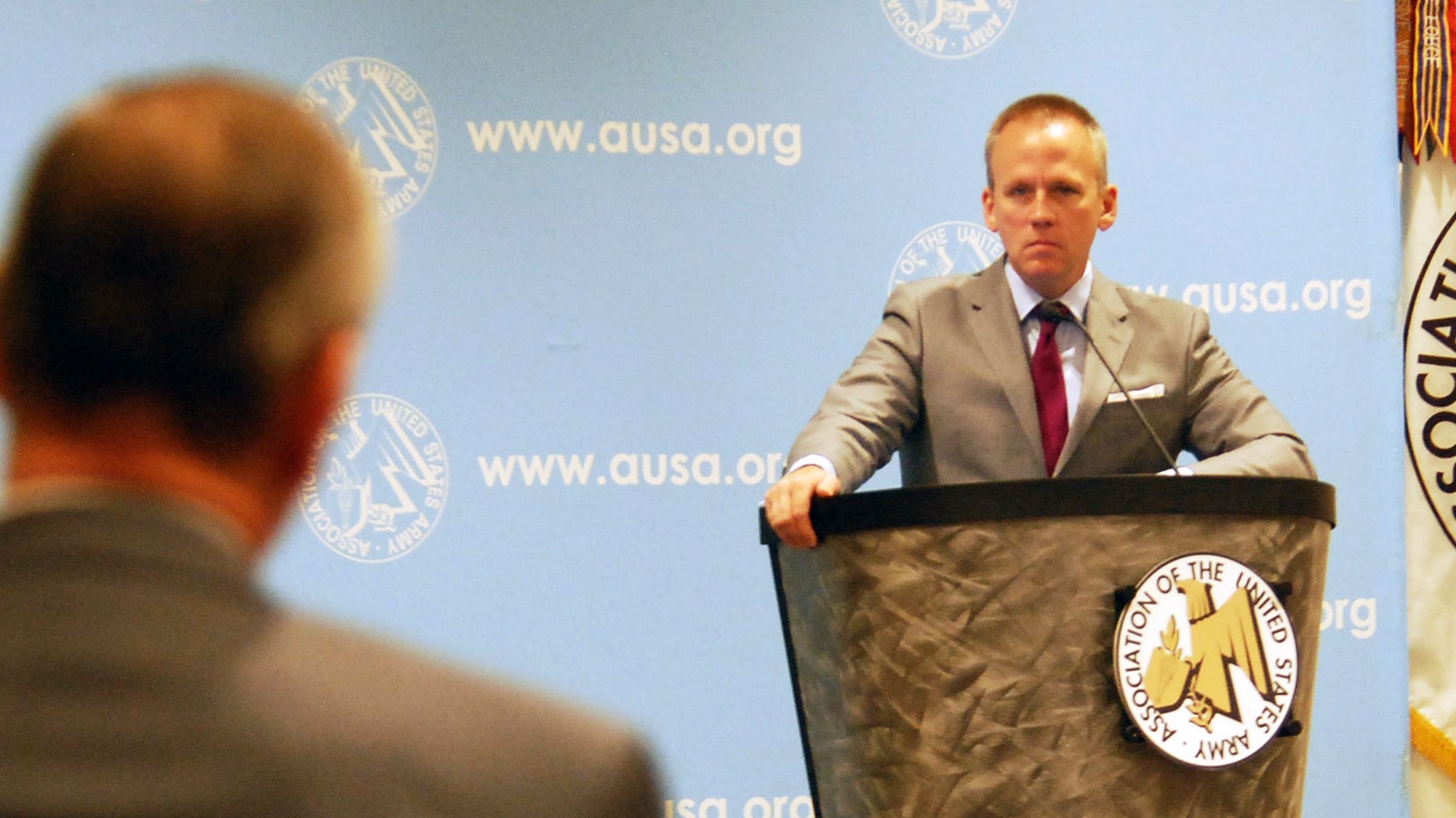Carson Will Offer ‘Revolutionary’ Plans for Army Personnel Reform
Carson Will Offer ‘Revolutionary’ Plans for Army Personnel Reform

A senior Pentagon official is making the case for a massive overhaul of the military personnel system--from recruiting to promotions to tour length and duration of service--in a move he describes as modernizing an aging set of rules and policies that are preventing the services from getting the most out of its people.“We must have a personnel system worthy of our mission,” said Brad R. Carson, undersecretary of the Army and acting undersecretary of defense for personnel and readiness, in a June 24 appearance before the Association of the U.S. Army’s Institute of Land Warfare.Carson heads an effort ordered by Defense Secretary Ashton Carter that is expected to lead to formal recommendation by Aug 19 about modernizing military and civilian personnel practices. “I have promised him revolutionary change,” Carson said.“It is my belief, my fervent belief, that the current personnel system, which has satisfactorily served us for 70 years, now is outdated,” Carson said. “What once worked for us has become now, in the 21st century, unnecessarily inflexible, inefficient and inequitable.”“There has been a revolution in human resources going on out there, and we are not part of it,” Carson said. This new effort involves about 100 people in the DoD and the services to propose what is being called “A Force for the Future.”“What we have is not what it should be,” Carson said, noting the Army and the other services spend a lot of money recruiting very few people into the military, do not seem to reward those who earn higher academic degrees, move people through assignments so quickly that they rarely are able to make use of the expertise they are learning, and force people to retire when they are at what the private sector would consider their peak. “That makes no sense,” Carter said.Carson praised the Army for doing better than the other services in managing personnel, but he said even the Army has problems tracking and advancing top talent. He didn’t offer details about possible changes, but mentioned the following areas are being studied:
- Accessions are expensive, with the Army alone making 16 million contacts a year to recruit about 68,000 people, 40 percent of whom don’t complete their first enlistment term and 20 percent who don’t make it to their first duty station. Carson said Army recruiters average 10 contracts a year, about the same as the Navy and Marine Corps, but the Air Force gets an average of 45 contracts per recruiter. “Is there a better way to do this?” Carson asked.
- The Army has become a “family business,” he said, noting 83 percent of recruits have a family member serving in the military and 33 percent have a family member who is retired military. “This level of military service in no way reflects the broader society,” Carson said.
- Attrition rates are higher for women than men but the Army “really doesn’t know why so many women leave,” Carson said. Fifty percent of female Army officers get out after their initial obligation. “To lose half at their first opportunity is something that cannot stand,” he said.
- The higher the investment in an officer’s education and training, the more likely he or she is to get out within 10 years, Carson said, noting that retention rates after the initial obligation are 38 percent for service academy graduates, 43 percent for four-year ROTC scholarship graduates, and 55 percent for non-scholarship ROTC students. This is “the opposite of what one would hope,” he said.
- Officers with graduate degrees paid for by their service are under-represented in the general officer ranks, something Carson said appears to show getting the degree “prejudices your chances for promotion to general officer rank.”
- Tenure in top military jobs is far shorter than in the private sector, Carson said. On average, chief executive officers in the private sector hold their respective posts for seven years; the Army chief of staff holds the job for four years or less.

